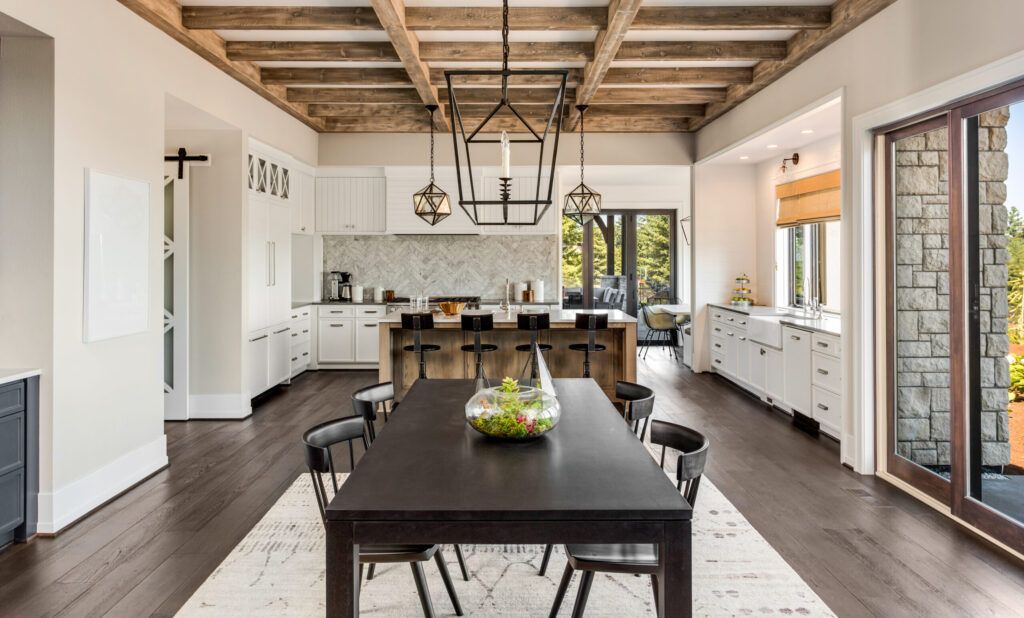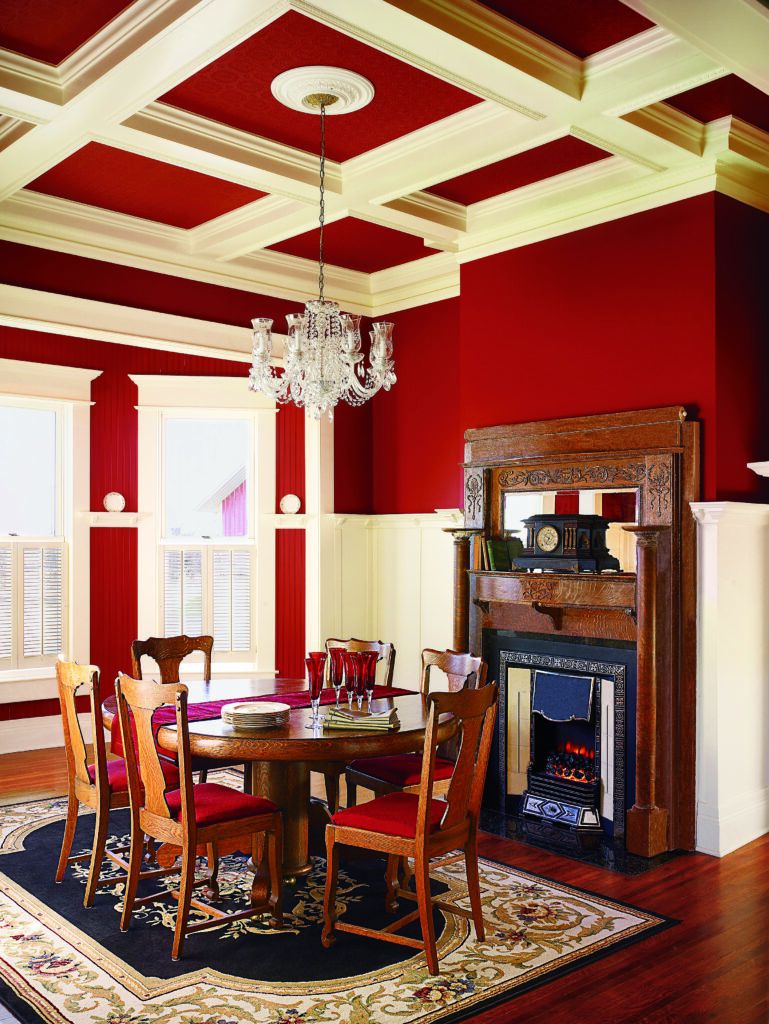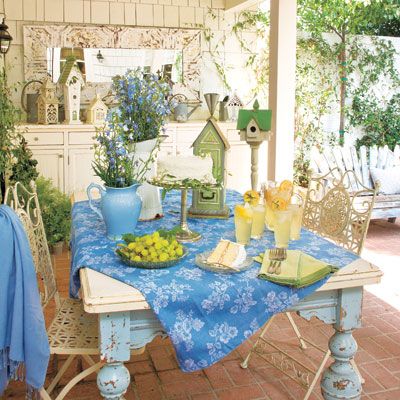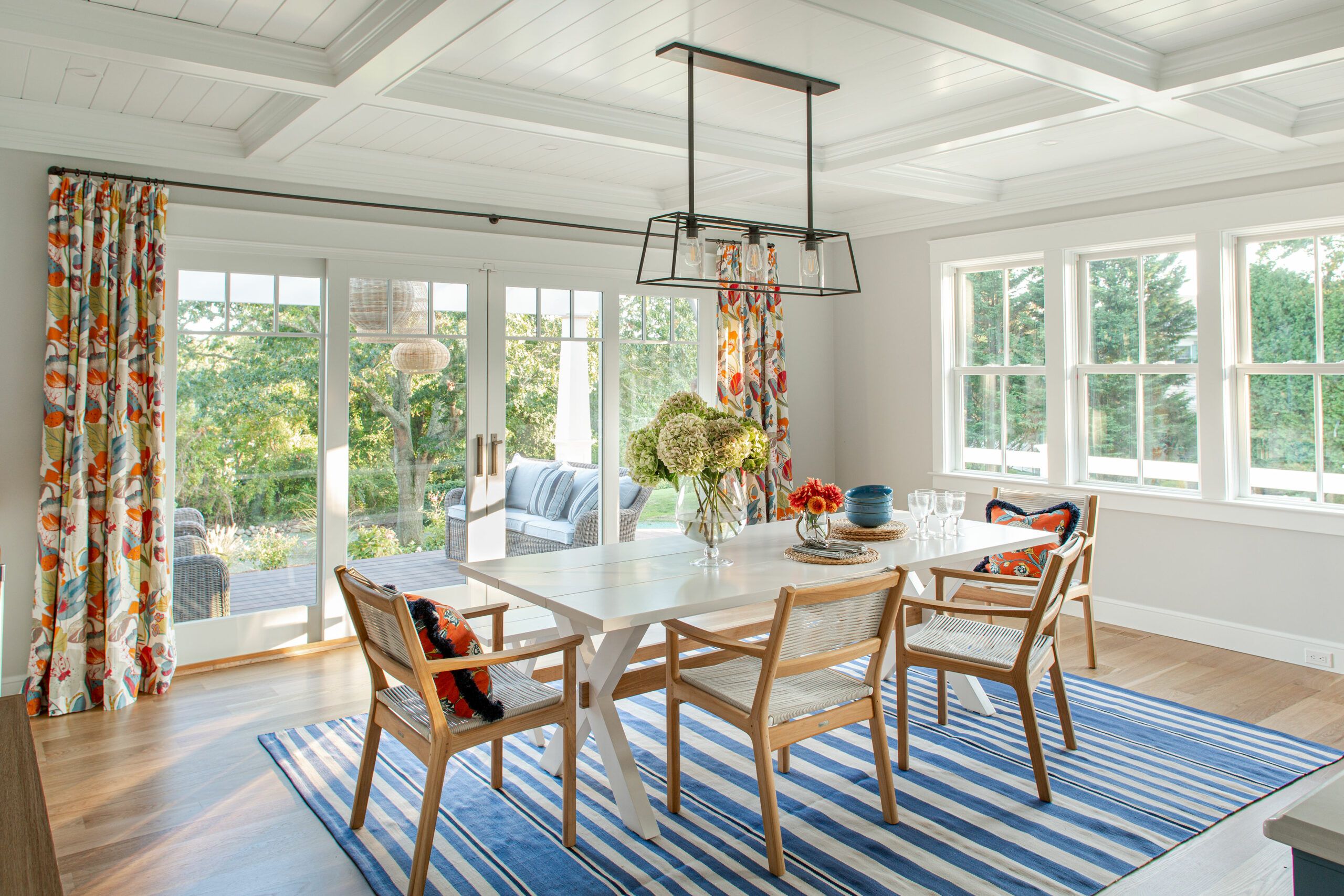The dining room is more than just a place to eat—it’s a space for conversation and all kinds of social events. Whether you’re hanging out with friends or sitting down to a meal, choosing the right color for your dining room can help set the tone for every occasion. There are plenty of style options available, from bold colors that make a statement to subtle tones that create a soothing atmosphere. In this guide, we’ll cover the best dining room colors and give tips on how to use them well.
Understanding Color Theory in Dining Spaces
Colors play a vital role in setting the mood of any room, especially in dining spaces. The right color palette can make the room warm and inviting, so it’s important to choose carefully.
Warm vs. Cool Colors
Warm colors, such as reds, oranges, and yellows, can create a cozy and energetic atmosphere. These hues are perfect for dining rooms where you want to encourage lively conversation and create a welcoming environment. They’re known to stimulate appetite and encourage social interaction, making them popular choices for dining rooms.
Cool colors, such as blues, greens, and purples, can create a calming atmosphere, perfect for more intimate or formal dining experiences. They provide a sense of calm and sophistication and are a good choice for a more relaxed feel.
The Impact of Color on Appetite and Mood
According to Virginia Commonwealth University and The University of Georgia, colors can significantly influence our appetite and mood during meals. Shades of red can help encourage an appetite, while shades of blue can suppress it. These aren’t hard-and-fast rules, but they are worth considering when choosing the color of your dining room.
What Are Some Popular Color Schemes for Dining Rooms?
When choosing a color scheme for your dining room, consider your home’s overall aesthetic. Here are some popular color schemes to consider:
Monochromatic Elegance
A monochromatic color scheme uses various shades and tints of a single color, creating a harmonious look. This approach can add depth to your dining room without overwhelming the space with too many different colors. For example, you could use various shades of blue in your dining room to create a calming and stylish monochromatic look.
Complementary Color Combinations
Complementary color schemes use colors opposite each other on the color wheel. This creates a dynamic look that can add contrast to your dining area. For example, you could paint your dining room blue and incorporate pops of bright orange and yellow. This contrast creates a bolder look while remaining cohesive.
Neutral Palettes That Pack a Punch

Neutral colors don’t have to be boring. When used strategically, they can create a dramatic look for your dining room. Charcoal gray is a versatile neutral that can add depth to your dining space while leaving room for other colors to shine through. For example, it provides a great backdrop for colorful artwork and can make white trim and moldings pop. Pair charcoal gray with metallic accents for a sleek, contemporary look.
Bold and Dramatic Dining Room Color Options

Bold colors aren’t for everyone, but they can be the perfect splash of excitement for homeowners who want to spruce up their dining room. Consider the bold colors below if your dining room needs a bit more flair.
Deep Reds and Burgundies
Rich, deep reds and burgundies can create a sense of luxury and warmth in your dining room. These colors can complement a wide range of decor styles, from traditional to modern. Be sure to balance deep reds with neutral accents to prevent the space from feeling overwhelming.
Rich Navy Blue
Navy blue is a versatile color that pairs beautifully with metallic accents and warm wood tones. It’s not as intense as deep red, but it still offers full saturation for your dining space. Navy walls can make a striking backdrop for artwork and provide a cozy feel during evening meals.
Emerald Green
Emerald green is a bold choice that can boost the life and energy of your dining room. This rich hue works well with wooden decor, creating a more natural feeling with earth tones. Pair emerald green with bright gold accents for a striking look.
How Can You Incorporate Color Through Furniture and Decor?

Furniture and decor offer opportunities to introduce subtle color without committing to painted walls. Here are some ways to add color through choosing your dining room furnishings:
Colorful Dining Chairs
Dining chairs in bold colors or patterns can add some much-needed personality to your eating arrangements. Mix and match chair colors for an eclectic look, or choose a single vibrant hue to contrast neutral tables and walls.
Statement Rugs
A colorful area rug can anchor your dining table and add some creativity to your room layout. Choose a rug with a bold pattern or rich hues to make a focal point and tie your color scheme together. For a balanced look, select a rug that extends at least 24 inches beyond the table on all sides.
Wall Art and Accessories
Artwork, curtains, and decorative accessories offer easy ways to introduce color into your dining room. Large-scale art pieces can draw guests’ attention, while smaller accessories like vases, table runners, and placemats allow you to change your color scheme seasonally.
Lighting Considerations for Color Enhancement
Proper lighting can dramatically affect how colors appear in your dining room. Consider these factors when choosing your dining room color:
Natural Light Effects
The amount and quality of natural light in your dining room can influence your color choices. North-facing rooms tend to have cooler light, which can make warm colors appear muted. South-facing rooms receive warmer light, enhancing the richness of warm hues.
Artificial Lighting Options
The type of artificial lighting you choose can also impact color perception. Warm white bulbs enhance warm colors, while cool white bulbs can make cool colors appear more vibrant. Consider using a combination of lighting types to create a balanced atmosphere. LED lights offer options in both warm and cool hues, so they’re a versatile pick for artificial lighting.
Dimmer Switches and Mood Setting
Installing dimmer switches allows you to adjust the lighting mood for different occasions. Bright lighting can energize the space for daytime gatherings, while dimmed lights create a more intimate atmosphere for evening meals.
Techniques To Add Visual Interest
Unique paint techniques can add depth and texture to your dining room walls. Here are some popular methods to consider:
Color Blocking
Color blocking is a bold technique that involves painting geometric shapes or sections of your wall in different colors. This process can create a modern, artistic look and allows you to incorporate multiple colors without overwhelming the space. Be sure to use painter’s tape to create clean lines between colors if you use this method.
Ombre Effects
An ombre effect gradually transitions from one color to another, creating a soft, peaceful look. This technique works well with both bold and neutral color palettes and can make your dining room feel more spacious. To achieve this effect, blend two or more shades of the same color family. Be careful not to blend too suddenly, or your colors will contrast quickly and eliminate the blending effect.
Textured Paint Finishes
Textured paint finishes can add subtle character to your dining room walls. Consider techniques like sponging, ragging, or using textured rollers to create unique patterns.
How To Test Paint Colors Before Committing

It’s important to test colors before painting the entire space. However, it can be difficult to get an idea of what your dining room would look like without painting first. To remedy that, here are some methods to help you make the right color choice:
Using Paint Samples
Purchase sample pots of your chosen colors and paint large swatches on your walls. This allows you to see how the colors look in your specific space and lighting conditions.
Virtual Color Testing Apps
Use house-paint apps to virtually test colors in your space before making a decision. These apps allow you to upload photos of your dining room and experiment with different color options.
Observing Colors at Different Times of Day
Observe your paint samples at different times of the day and under various lighting conditions. Colors can appear different depending on the time of day and the type of light in the room.
Seasonal Color Changes for Dining Spaces
You can keep your dining room fresh and exciting by incorporating seasonal color changes and holiday decor. Here’s how you can adapt your dining room colors throughout the year without having to repaint:
Spring and Summer Hues
For spring and summer, consider incorporating light, bright colors such as pastels or vibrant hues. Use accessories like table linens, centerpieces, and artwork to reflect the changing seasons.
Fall and Winter Palettes
In fall and winter, opt for richer colors. Apply warm oranges and deep reds for fall. Then, use cool blues and silvers for winter to create a festive atmosphere.
Easy Ways To Transition Between Seasons
Use easily changeable elements like throw pillows, table runners, and curtains to transition your dining room colors between seasons. This allows you to refresh your space without repainting or making major changes.

